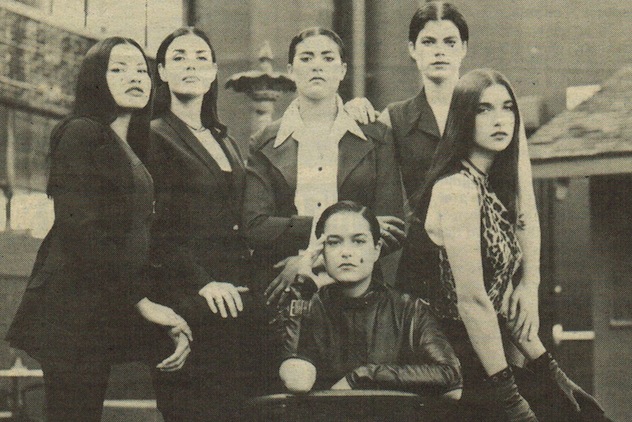Image from a Go-Go newspaper ad, circa 1992. Courtesy of Cheryl Butson.
Article originally published February 12, 2013 by The Grid online (thegridto.com).
The Ballinger brothers – owners of clubs including the Big Bop and Boom Boom Room – were not known for creating sophisticated spots. That changed with the chic, tri-level super-club that brought long line-ups to the Entertainment District in the early 1990s.
BY: DENISE BENSON
Club: Go-Go, 250 Richmond St. W.
Years in operation: 1990-1993
History: Though based in Toronto for less than a decade, the brothers Ballinger made a long-lasting impression. The “Rock ‘n’ Roll Farmers” from Dundalk were entrepreneurs who’d originally opened a variety of venues in Cambridge, Ontario in the late 1970s.
In 1986, Lon, Stephen, Doug, and Peter Ballinger opened the multi-leveled Big Bop club at Queen and Bathurst. The wildly popular hangout would anchor the southeast corner for over two decades, and was the cornerstone of the club empire the Ballingers would build. Their Boom Boom Room, opened at Queen and Palmerston in 1988, was much smaller in size, but was trendsetting with its mix of rock, alternative, house, and queer nights. With a few years’ experience in T.O. and a staff that was willing and able to bounce between venues, the Ballingers soon set their sites on 250 Richmond St. W. for an ambitious new venture.
Richmond and Duncan was not yet an obvious choice of location. After-hours club Twilight Zone had closed just the year before, and Charles Khabouth’s Stilife, located directly across the street, was showing signs of slowing. Beyond these venues, and after-hours rave destination 23 Hop, which would soon open at 318 Richmond St. W., the area was still largely deserted at night.
But with Doug Ballinger at the wheel, the brothers would develop a 14,000 square foot, tri-level warehouse building into one of the most innovative and influential clubs Toronto would experience in the 1990s.



